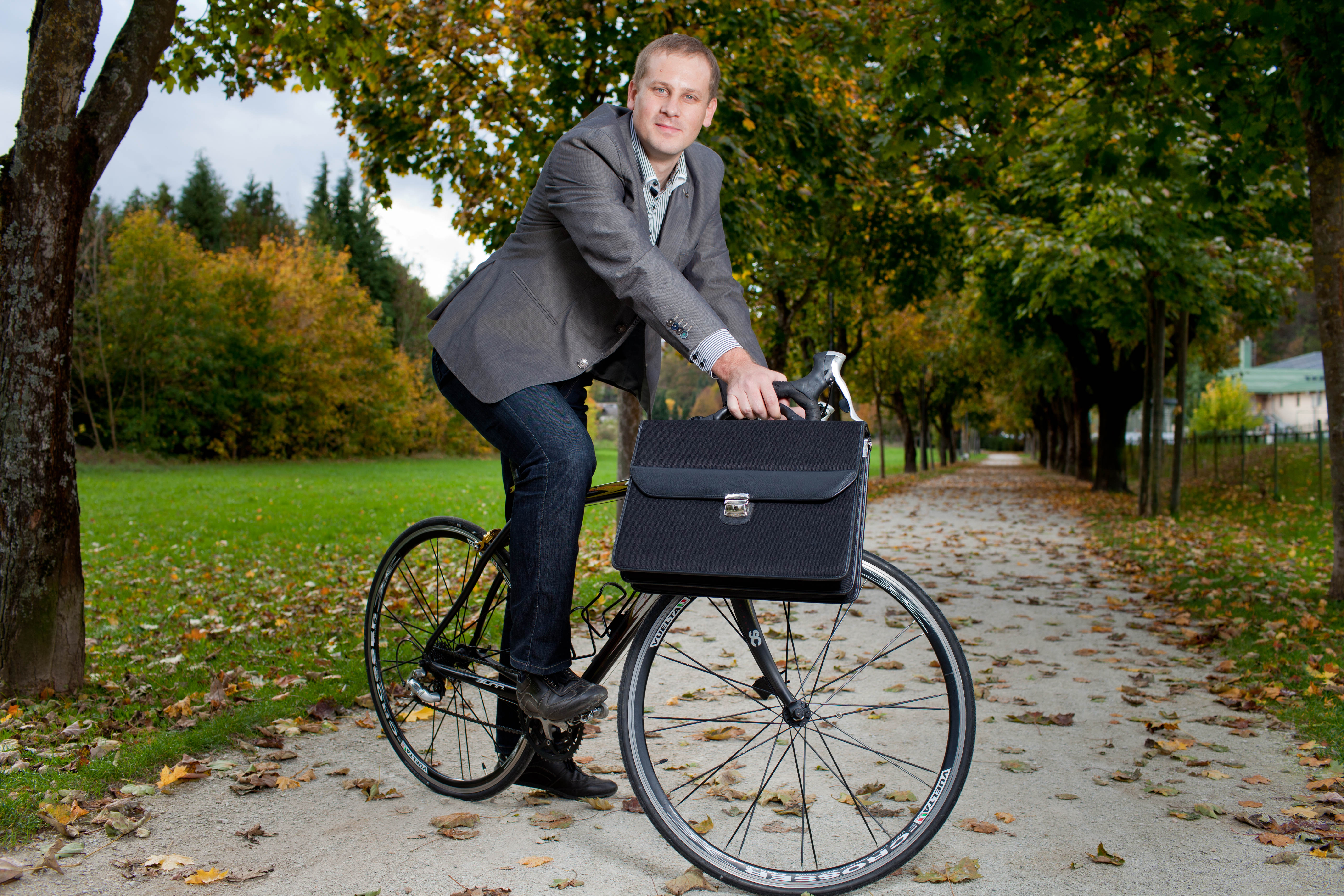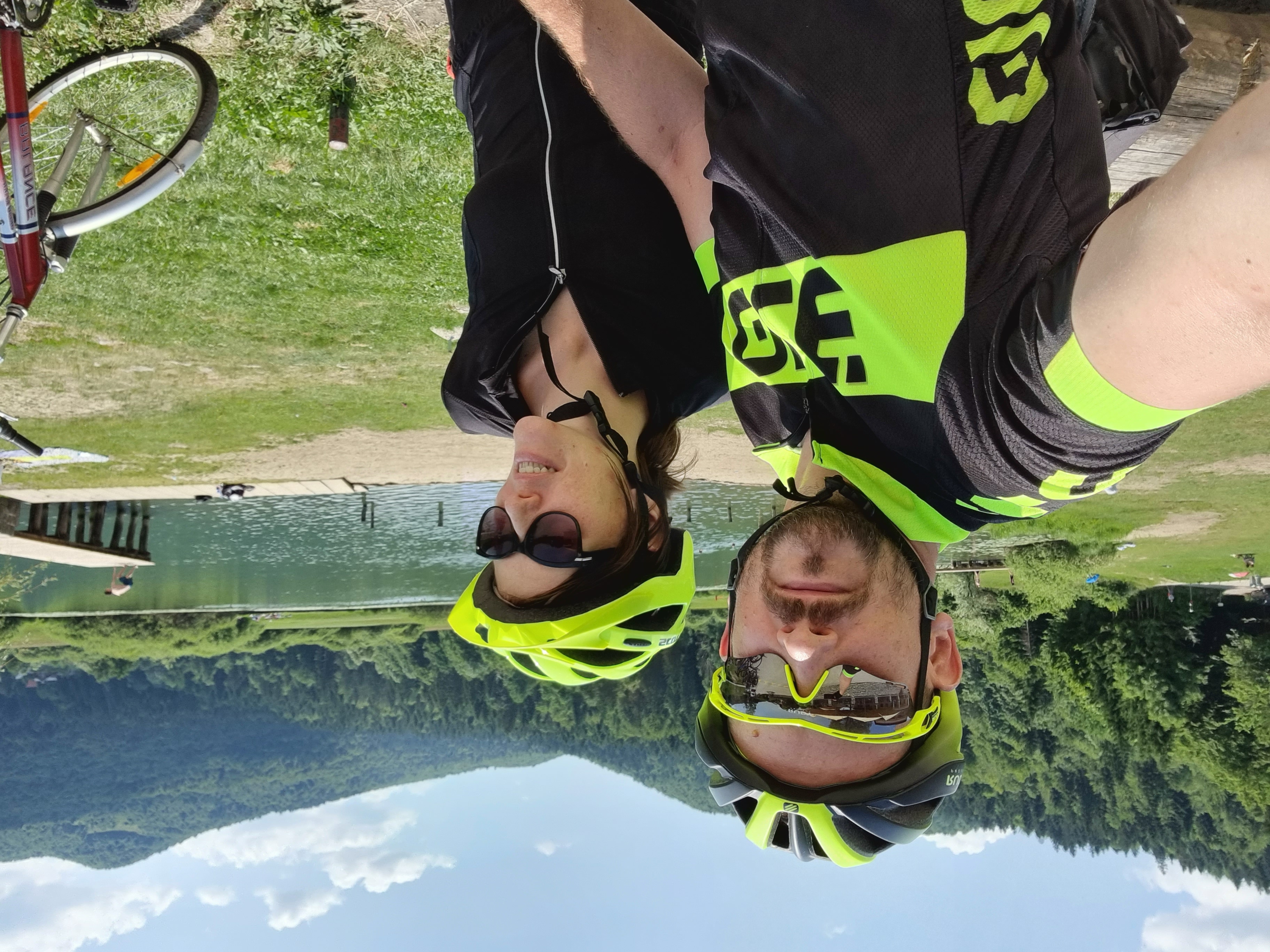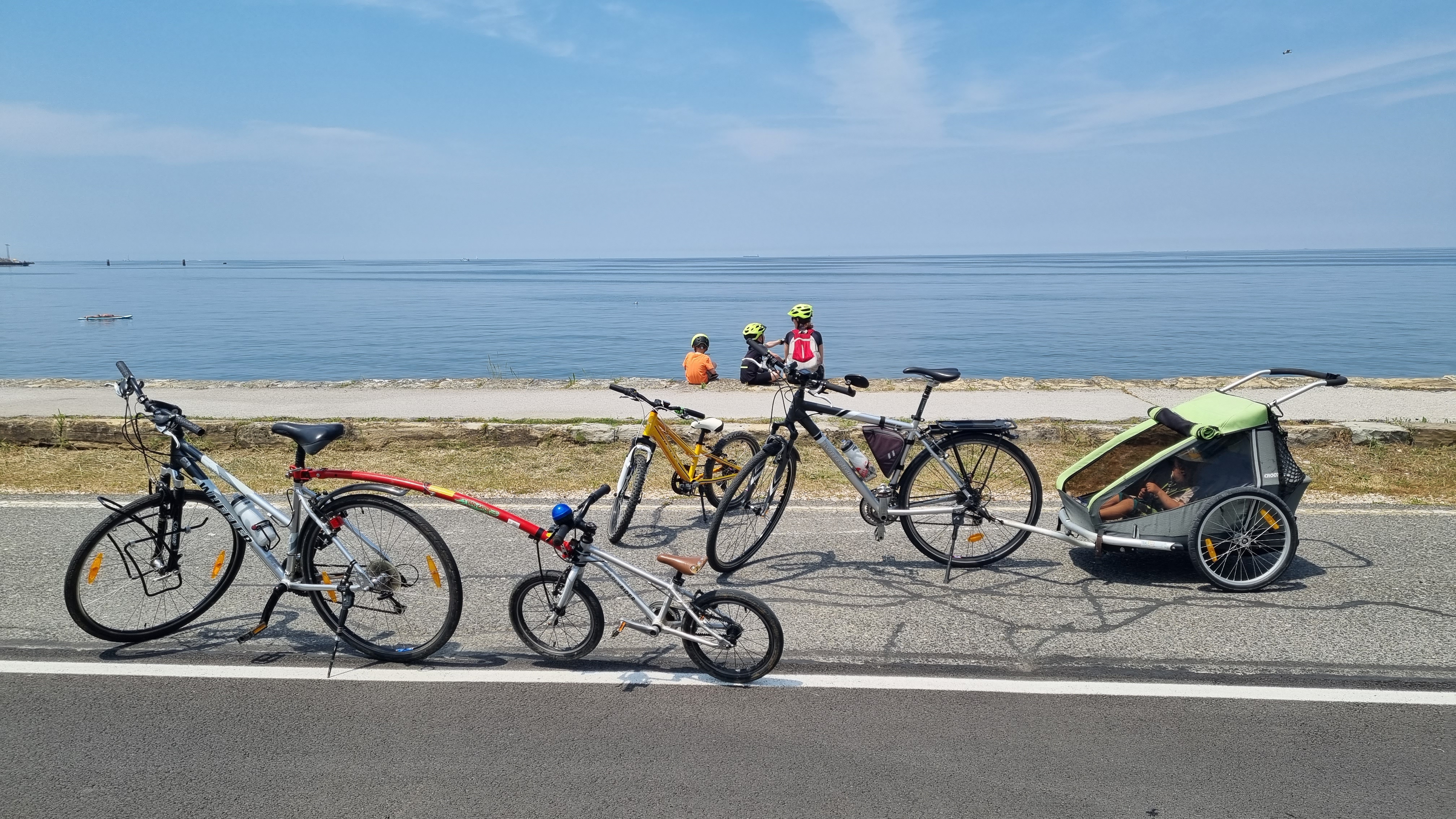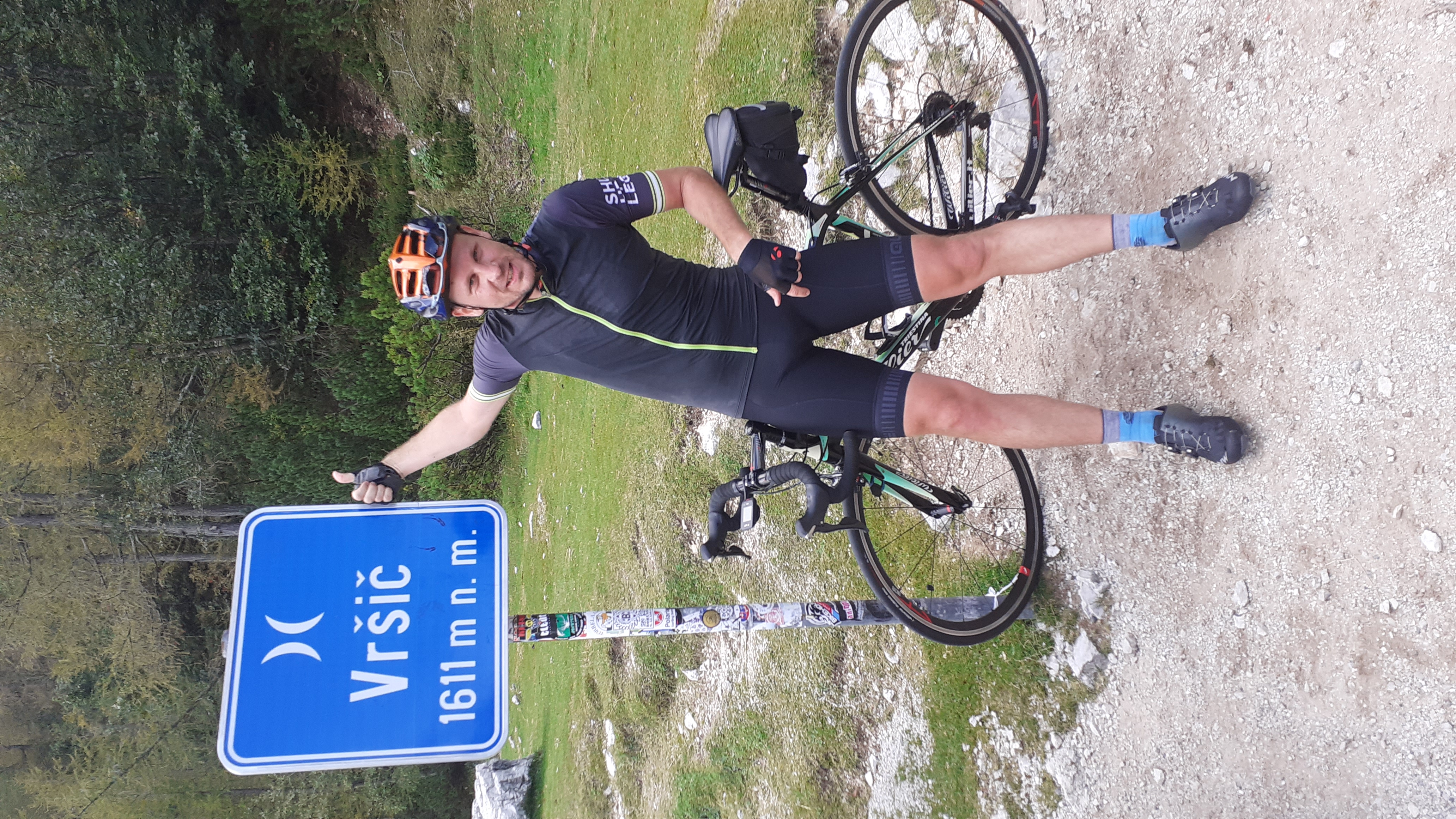SABRINA - INTERVIEW WITH GREGOR STEKLAČIČ (MINISTRY OF INFRASTRUCTURE, SLOVENIA)
13-12-2021
With Gregor Steklačič, national cycling coordinator of Slovenia, we have talked about his passion for cycling, how to improve the safety of cyclists, why international cooperation is crucial for improving the position of cycling as a mode of transport all over Europe and much more.
Two Danube Transnational Programme projects, the SABRINA and Danube Cycle Plans project (a few words about both projects are below), dealing with cycling have joined forces and prepared a series of interviews with people working in the mobility and transport field, with the focus on cycling. We have asked them about their opinion on different topics connected to more cycling, safer cycling infrastructure, promotion of cycling, etc. Visit the webpages of both projects to read the interviews which will be collected also in the joint newsletter published in December 2021 (subscribe HERE).
_______________________________________________________________________________________________________________________________
 Gregor Steklačič joined the Ministry of Infrastructure of Slovenia in 2016. He works as an Undersecretary in the Sustainable Mobility and Transport Policy Directorate and is appointed as national cycling coordinator since 2019. His main tasks include coordination of the cycling issues on ministerial and inter-ministerial levels, coordination of EU-funded investments in cycling infrastructure and supporting regional and local authorities in the promotion of cycling.
Gregor Steklačič joined the Ministry of Infrastructure of Slovenia in 2016. He works as an Undersecretary in the Sustainable Mobility and Transport Policy Directorate and is appointed as national cycling coordinator since 2019. His main tasks include coordination of the cycling issues on ministerial and inter-ministerial levels, coordination of EU-funded investments in cycling infrastructure and supporting regional and local authorities in the promotion of cycling.
Prior to joining the ministry, Gregor spent several years working in the private sector as well as public administration, focusing on sustainable mobility topics since 2012. He holds a bachelor’s degree in Geography from the University of Ljubljana, Slovenia. He is an avid everyday and recreational cyclist who did more kilometers with his bike than his car in the past two years.
_______________________________________________________________________________________________________________________________
 Gregor, you are a cyclist yourself. Do you use your bicycle rather for commuting and daily errands or more for leisure purposes?
Gregor, you are a cyclist yourself. Do you use your bicycle rather for commuting and daily errands or more for leisure purposes?
I use a bicycle for both purposes. My commute to work somehow always includes the bicycle. In cooler months, I use the folding bike to get to the nearest train station from my home, then I use public transport to reach Ljubljana where I unfold my bike to do the rest of the journey to my office. In the warmer parts of the year, I jump on my “trek” bike and cycle all 23 km from my home to the office. Bicycle is also my companion in my free time. I love to do leisure cycling trips with my family on one hand and get involved in training and competitions on Strava with my cycling buddies on the other hand. If I had to choose one, I prefer cycling for leisure purposes, when I have the option not to cycle in bad weather, like heavy rain.
Have you ever had any bad experiences with poor/unsafe infrastructure while cycling? If yes, what was it? What are your main pain points as a cyclist when it comes to infrastructure?
Honestly, I do not remember many situations when I felt uncomfortable while cycling. I feel quite safe even when I cycle on a road with mixed traffic, but this is probably due to my own personal experiences. I was raised in a rural area where no cycling infrastructure existed and as kids, we had to use roads to cycle. The fact is, that the traffic volume was also lower.
The increase in the traffic volume, the share of heavy lorries on roads and the speed of motorized vehicles made the cyclists one of the most vulnerable road users. That is especially seen in car-oriented countries, which most of the countries in the Danube area are, in which the development of road infrastructure prioritized motorized traffic. That then led also to a driving culture where car drivers get nervous if they have to drive slowly and wait to safely overtake cyclists on the road.
Most of my bad experiences while cycling is connected to close overtaking by motorized vehicles. Since we implemented safe overtaking in a minimum of 1,5 m in Slovenian legislation earlier this year, I hope that will change a bit drivers’ behaviour. In general, I think most of the bad cyclists’ experiences come from the lack of cycling infrastructure, where it should have been built. Especially, when I started to cycle with my kids, I realized how important safe cycling infrastructure was. Separated cycle tracks and lanes and low-speed zones are preconditions for safe and comfortable cycling for people of all ages and abilities.
Another pain point for me is feeling cyclists are being neglected at an intersection, especially at traffic light intersections. It is hard to understand why the green light for cyclists is shorter, or why it has in some cases a shorter delay compared to green light for cars. I wish road managers would include the needs of all participants in the traffic when designing infrastructure. It is just a matter of priorities.
 In May 2021, the Pan-European Master Plan for Cycling Promotion (PEMP) was adopted. Why, in your opinion, is PEMP so important? What are the most important elements of PEMP for Slovenia and other countries in the Danube region?
In May 2021, the Pan-European Master Plan for Cycling Promotion (PEMP) was adopted. Why, in your opinion, is PEMP so important? What are the most important elements of PEMP for Slovenia and other countries in the Danube region?
The process of a shift in mindset is always long and it does not happen without the strong commitments of the decision-makers. The decision-makers have to be part of it so that the change will really happen.
Strategic document for cycling promotion, adopted by so many countries’ delegates, also the Slovenian state secretary, is helping us, the cycling officials, to convince stakeholders that cycling is an important means of transport, that it contributes to carbon neutrality and that it offers a great opportunity for tourism. If Europe wants to be the leading continent on the way to carbon neutrality, we have to support cycling as one of the most efficient ways to achieve this goal.
Besides that, the document brings us a common vision, goals and targets on a Pan-European level that will guide us at the national level. The Pan-European Master Plan was the initial impulse for the Slovenian Ministry of Infrastructure to join the Danube Cycle Plans project. Together with other project partners, we want to achieve that more people will cycle in the Danube region.
Slovenia is one of the countries involved in the Danube Transnational Programme (Interreg Danube). As you mentioned, the Ministry is a partner of Danube Cycle Plans and also an associated strategic partner of the SABRINA project. One of the main goals of both projects is to define the network of safe cycle routes and improve the infrastructure for cyclists. What is your role in both projects? Why do you think it is important for national authorities to be involved in transnational projects like SABRINA and Danube Cycle Plans?
Our ministry is responsible for transport policies in our country, which is also the main topic of the Danube Cycle Plans project. Cycling is included in our strategic documents as one of the means of transport. The Resolution on the National Programme for the Development of Transport in the Republic of Slovenia until 2030 demands the elaboration of a national strategic document on cycling network development. The participation of the Ministry as a partner in the Danube Cycle Plans project will facilitate this process and support it financially. Besides, the project brings us so many other benefits: experienced partners with a broad knowledge base, a mentoring scheme, common project guidelines based on the experiences of diverse partners, and last but not least, linking us interactively with an international group of experts, discussing issues and challenges to overcome. The experience from the Danube Cycle Plans project will significantly improve our result – a national strategy on cycling – and put it into the common context in the Danube region.
The SABRINA project is also of great importance to our Ministry, as it brings a new approach to assessing the safety of cycling infrastructure in Slovenia. Countries like ours, where cycling infrastructure is in development, do not have a method to address safety issues. The reason is that our focus is mainly on building the missing links. Testing this approach within the SABRINA project on existing infrastructure will help us convince the planners to consider the safety aspects in the preconstruction phase (when preparing the project documentation) for the new cycling infrastructure.
In 2017, the Development of a model to connect Slovenia with cycling routes was finished. The aim of the project was to establish a comprehensive cycle route network at the national level for Slovenia. In 2018, it led to the amendment of the Road Act, which laid the foundation to define the National Cycle Route Network in legislation. Can the principles used for the Slovenian Cycle Route Network definition be used in other countries of the Danube Region? If yes, how can this be done?
The method you are referring to is very simple and, in my opinion, easily transferable to other countries or even to bigger regions. The basic principle is to define the points (urban centers, tourist attractions, etc.) that you want to connect with the cycle routes, divide them along different levels and connect the same level points with a cycle route. First, you connect the highest level of points and afterward create the missing links between lower levels of defined points. The method of determination of points and the number of levels/categories is in hands of each country.
We have elaborated the Guidelines to Define National Cycle Route Network within the Danube Cycle Plans project that describes the method in detail and are downloadable from the project output website. Danube Cycle Plans project partners are currently assessing their existing networks or defining new ones. Every region or state can use this methodology to check or define its Cycle Route Network.


The goal of the SABRINA project is to help decision-makers to plan, design, and implement safe and sustainable solutions for improved cycling infrastructure in the region. One of the results of additional and safer cycling infrastructure will be fewer fatalities and seriously injured amongst cyclists which is in line also with the PEMP. Besides safer infrastructure, what are other important steps in achieving this goal?
We all know that cyclists are one of the most vulnerable road users. But we rely on official statistics that measure only the fatalities and injured in “reported” traffic accidents with the participation of cyclists. The fact is that the share of cyclist fatalities compared to the modal share of cycling is much bigger in all countries. In the Netherlands, where they have one of the best cycling infrastructures, the difference is one of the smallest, so besides the urgency to improve our infrastructure in a way to prioritise cyclists and pedestrians, we also have to work on improving the driving culture. Car drivers should respect cyclists on the road, where no separated cycling infrastructure exists, and overtake them with 1,5 m of distance. At the same time, cyclists should be more aware of their vulnerability. Moreover, we recognise an issue of collisions between cyclists and pedestrians in pedestrian zones as well. All participants in traffic should coexist since there will always be occasions where their paths will cross.
I would like to mention an interesting point of safety. At the Smart Pedal Pitch at Velo-City conference in Lisbon, the forum where innovative products in cycling compete to get a European Cyclists’ Federation Award for further development, all three finalists were promoting innovative solutions to count a number of ‘near misses’. ‘Near misses’ are dangerous situations in traffic where a cyclist is involved, but no traffic accident happened and nobody is injured, so it is not in official statistics. However, those situations reflected on people’s perception of safety and that lead to the conclusion that cycling was not safe. This is still a pretty unresearched field that would help to identify bad infrastructure design and propose solutions, not only where we have separated cycling infrastructure, but also where no infrastructure exists at all. We should evaluate our infrastructure from the technical point of view (width, surface, curves, poles, etc.), but also from the safety aspect and cyclists’ perception of safety.
Surely, the SABRINA project will improve the knowledge about infrastructure design, not only in compliance with technical standards but also with regard to safety.
Slovenians are very outdoorsy people. Cycling has always been a popular way of spending one's free time. With the amazing performances of professional cyclists Primož Roglič and Tadej Pogačar, the popularity is booming. Besides your athletes, who do you think are the best ambassadors of cycling – for recreational and everyday purposes?
 Can you imagine how proud we are of our professionals? I think that the popularity of competitive cycling overtook even football in the last two years. Cycling was very popular even before the superb results of our athletes. Now kids really want to cycle, and hopefully, we will be able to keep this momentum: to encourage kids to cycle more as well as to retain our top positions in professional cycling also with the next generation. We invited two professional cyclists, Matej Mohorič and Luka Mezgec, who also have great results, to be our cycling ambassadors in the framework of the Danube Cycle Plans project.
Can you imagine how proud we are of our professionals? I think that the popularity of competitive cycling overtook even football in the last two years. Cycling was very popular even before the superb results of our athletes. Now kids really want to cycle, and hopefully, we will be able to keep this momentum: to encourage kids to cycle more as well as to retain our top positions in professional cycling also with the next generation. We invited two professional cyclists, Matej Mohorič and Luka Mezgec, who also have great results, to be our cycling ambassadors in the framework of the Danube Cycle Plans project.
But not only the professionals are cycling ambassadors, we have many people who are passionate cyclists with their own stories. I definitely have to mention the vice-mayor of Ljubljana, dr. Janez Koželj, who is the main urbanist in Slovenia’s capital city for the last 15 years. During his time, Ljubljana was included to the Copenhagenize list of bike-friendly cities, the city will host the Velo-City conference in 2022, and is the most cyclable city in Slovenia.
Cycling is of the main focuses for Slovenian tourism, therefore we invited Maša Klemenčič from the Slovenian Tourist Board and an owner of a tourism agency, Luka Poznič, to become cycling ambassadors. They both shared their view on the importance of cycling infrastructure. One special branch of leisure cycling and an important tourist product in Slovenia is mountain biking. One of our top television and radio hosts, Boštjan Romih, regularly relaxes with cycling off-road, and he shared his passion with us.
In my eyes, true ambassadors are people who cycle for commuting to work, school or daily errands on a regular basis. One of them is Manca Dolenc, who uses two bikes on her way to work. She rides the first bike to the train station in her home city, takes the train to Ljubljana, where she hops on the second bicycle and rides to her office.
It is important to highlight that all development of cycling infrastructure and cycling itself would not be possible without financial support from the state administration. How much and how we are investing in cycling in Slovenia is presented by Darko Trajanov, the General Director of the Directorate for sustainable mobility and transport policy and an avid cyclist himself. Check and share the videos (videos are available by clicking on the cycling ambassadors´ names) and get closer to each field of cycling in Slovenia.
What is your first association to the word bicycle?
Smiling and happiness. Have you ever seen a cyclist not having a smile on his face? There are some grimaces when riding a bike up a steep hill, but on top of the mountain pass, we are all smiling from ear to ear, taking selfies, and sharing our happiness with our friends.
_____________________________________________________________________________________________________________________________
Photo 1: Gregor Steklačič (personal archive)
Photo 2: Commuting to work (personal archive)
Photo 3: National cycling coordinator of Slovenia on the way to work (personal archive)
Photo 4: Family trip on the EuroVelo 8 (Porečanka) at the Slovenian coast (personal archive)
Photo 5: Gregor and his wife cycling to Podpeč lake, Slovenia (personal archive)
Photo 6: Gregor on the top of Slovenian mountain pass Vršič (personal archive)
_____________________________________________________________________________________________________________________________
A few words about both projects:
• SABRINA project focuses on road infrastructure safety for cyclists as one of the most vulnerable road users. It tackles cycling infrastructure safety issues on existing, planned, and missing cycling corridors crossing nine countries in the Danube region. The main goal is to help decision-makers plan, design, and implement safe and sustainable solutions for improved cycling infrastructure in the region. More at the project’s webpage, Twitter or Facebook account.
• Danube Cycle Plans project aims to implement Pan-European Master Plan for Cycling Promotion. Project activities include the development of National Cycling Plans based on a common transnational Danube Cycling Strategy, defining a Danube cycle route network, infrastructure standards and adequate financial support and increasing the awareness of relevant stakeholders for the needs of cyclists. More at the project’s webpage.
![]()



